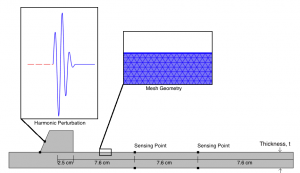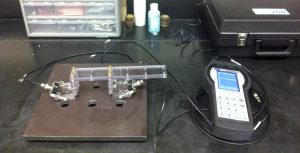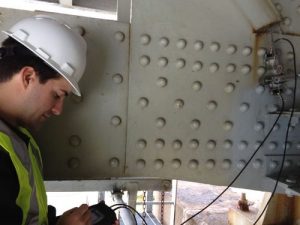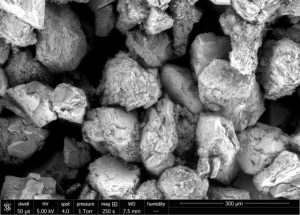Summary: A study on the acoustoelastic ultrasonic stress effects in the frequency domain was carried out with a focus on structural steel gusset plates. The primary objective was to construct a field device to provide measuring capabilities for engineers performing structural inspections.
Numerical studies were performed in the time domain and frequency domain to identify critical device design parameters. In the time domain study, a minimum wave frequency was determined based on the common gusset plate thicknesses. With a set perturbation frequency, a stressed study was performed in the frequency domain to confirm the expected frequency shift.
A paired wedge device was constructed to easily attach to the surface of an exposed steel member. Upon initial testing, ultrasonic coupling and surface repeatability issues were identified. Methods to mitigate the large effects of varying surface coupling conditions were developed and implemented.
The relationships between applied stress and peak perturbation frequency shift were explored. Three critical areas of tests were performed: the uniaxial case, the biaxial parallel loading case and the biaxial angled loading case. Satisfactory linear or bilinear relationships were found for all cases, except the biaxial angled loading case.
A field test was conducted on a fracture critical Pratt Truss bridge gusset plate. The results of the field test when compared with a numerical model confirm the frequency shift with increased loading stress. The accuracy of the field test is affected by suspected shear influence factors in the biaxial angled loading case. Further research has been identified to reduce the error to more applicable bounds for inspection duties.
Full Report: https://indigo.uic.edu/bitstream/handle/10027/9702/Bittner_James.pdf




